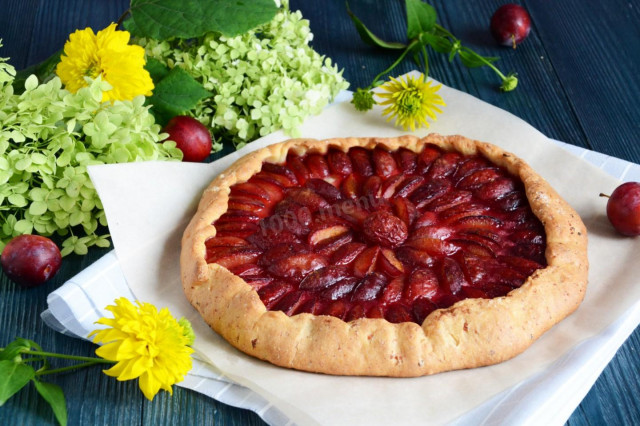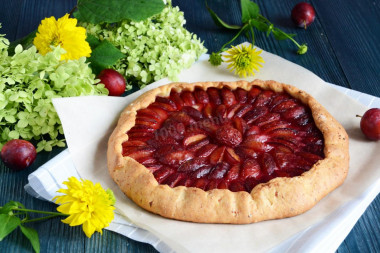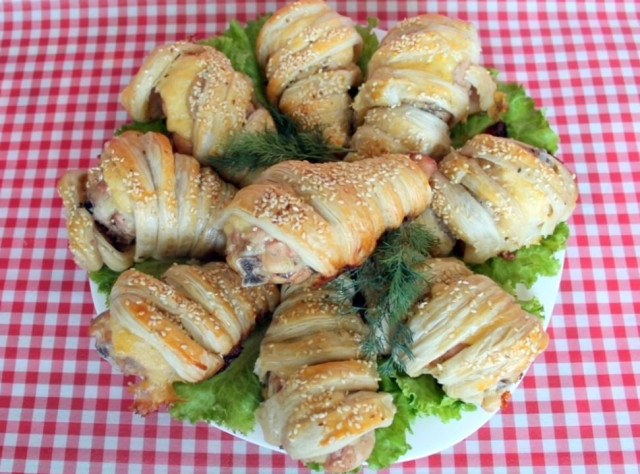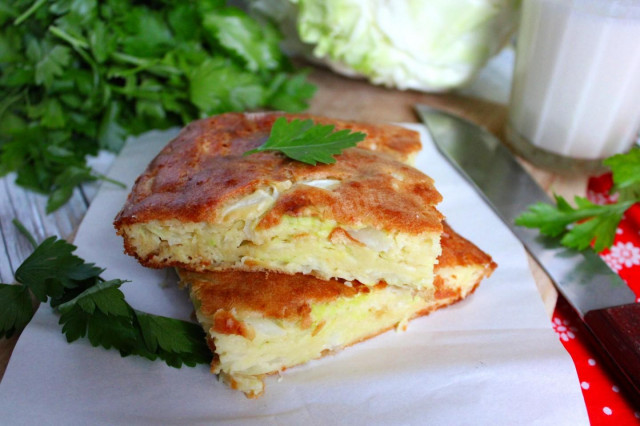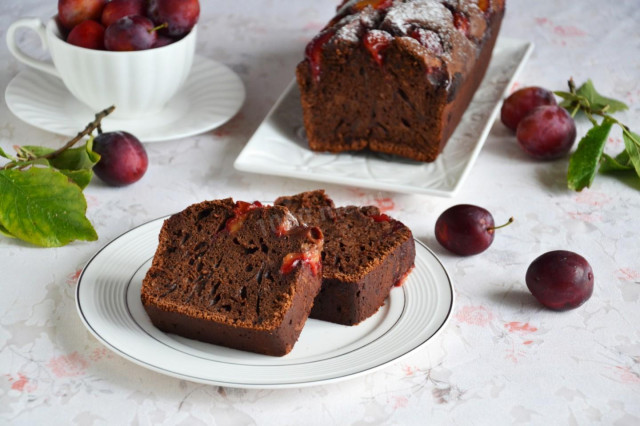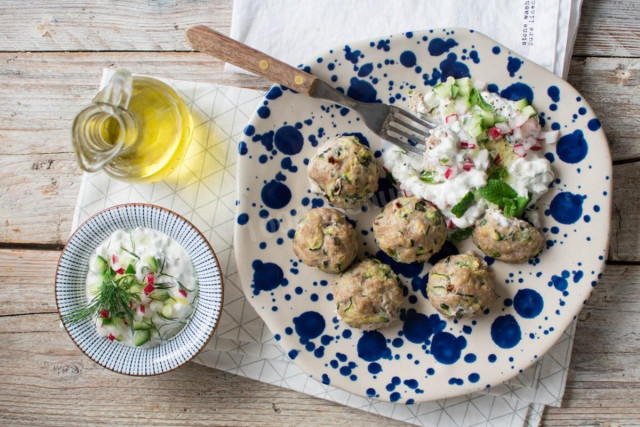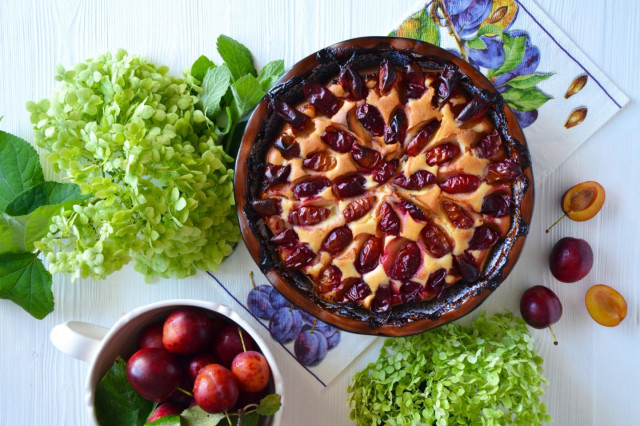Composition / ingredients
Step-by-step cooking
Step 1:
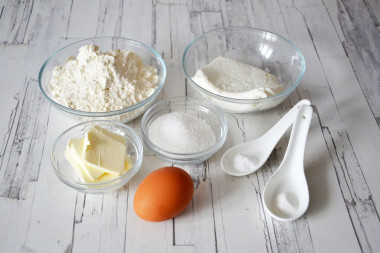
Dough. To prepare the dough for biscuits with plums, we will need: flour, cottage cheese, sugar, egg, soft butter, baking powder and vanilla.
Step 2:
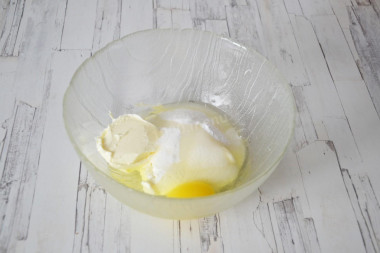
In a bowl, combine cottage cheese, egg, sugar and vanilla. I took cottage cheese in a briquette. It is soft, moist, easy to knead and does not need to be additionally wiped through a sieve. If the cottage cheese is lumpy, mash it with a fork or rub it through a sieve.
Step 3:
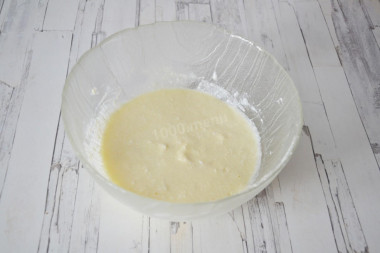
Mix everything until smooth. You should get a semi-liquid homogeneous mass.
Step 4:
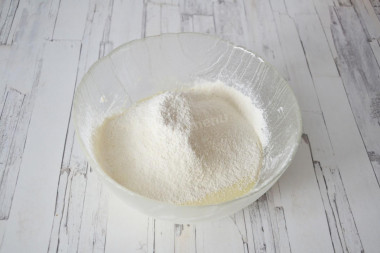
Sift flour with baking powder. Add the sifted flour to the curd-egg mass..
Step 5:
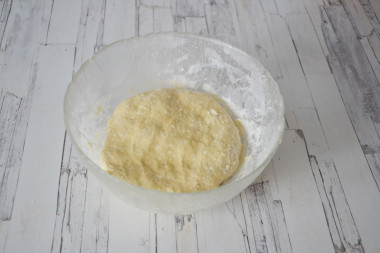
Knead a soft elastic slightly sticky dough.
Step 6:
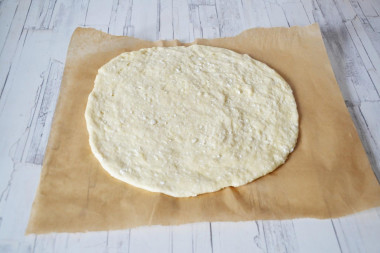
Roll out the dough, and it is better to distribute it with your hands in an even circle with a diameter of 25-30 cm. Transfer the dough to a baking sheet lined with parchment. My dough stuck to the countertop, and I didn't want to hammer it with flour, so I distributed it immediately on parchment.
Step 7:
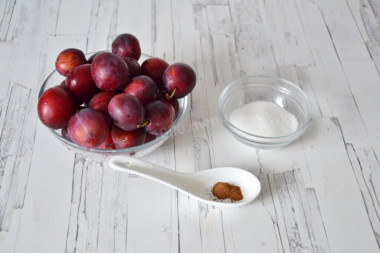
Filling. To prepare the filling, we will need: plums, sugar and ground cinnamon.
Step 8:
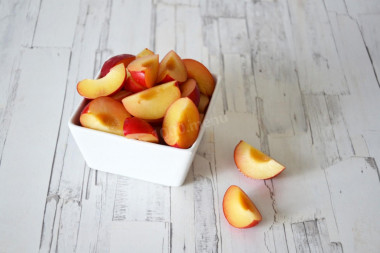
Wash the plums well, dry them. Cut the plums in half and remove the seeds. Cut each half in half again to make quarters. It is better to take hard plums, but ripe. Since soft plums can lose their shape and the biscuit will turn out ugly.
Step 9:
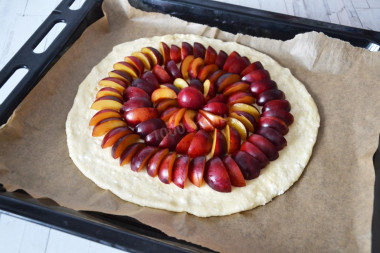
Put the plum slices on the dough in a circle, stepping back from the edges about 2 cm. I laid out each circle in different directions so that the finished pastries looked spectacular.
Step 10:
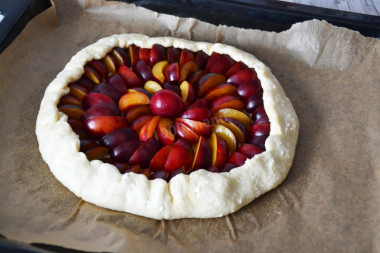
Wrap the edges of the dough inside, forming a biscuit.
Step 11:
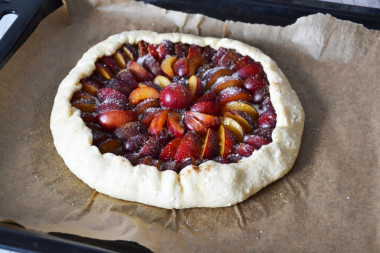
Sprinkle the plums with cinnamon and sugar.
Step 12:
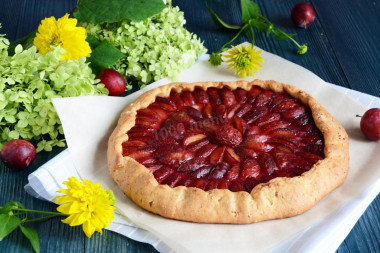
Bake the biscuits with plums in a preheated 180 ° C oven for about 30 minutes. Transfer the finished biscuit to a plate and cut into pieces. Bon appetit!
Biscuits (fr. galette; from Old French. gal - boulder, naked; bret. krampouezhenn, mnog. krampouezh) is the collective name of Breton and generally French flatbreads. Since dry cakes were used on ships instead of perishable bakery products, in Italian, Spanish, Russian and a number of other languages, biscuits began to be called dry biscuits like crackers.
Since cookies are very dry, they can be stored for years without cooling. People can live long enough only on biscuits and water. The biscuit is eaten by itself, dipped in coffee, or crumbled, added to the soup. Inexpensive, tough and easily transported, biscuits have been a staple food in military life for most of our history. It was also the most convenient food for soldiers, researchers and sappers.
However, another biscuit in France is called the simplest open pie, which does not require any special shape (the sides are wrapped with hands) or a long time to cook. That is, a biscuit is an open pie with a filling.
The calorie content of the products possible in the composition of the dish
- Chicken egg - 157 kcal/100g
- Egg white - 45 kcal/100g
- Egg powder - 542 kcal/100g
- Egg yolk - 352 kcal/100g
- Ostrich egg - 118 kcal/100g
- Plum - 42 kcal/100g
- Fresh frozen plum - 52 kcal/100g
- Cottage cheese of 40% fat content - 466 kcal/100g
- Cottage cheese of 20% fat content - 233 kcal/100g
- Cottage cheese of 18% fat content - 226 kcal/100g
- Cottage cheese of 10% fat content - 156 kcal/100g
- Low-fat cottage cheese - 75 kcal/100g
- Cottage cheese with sour cream - 260 kcal/100g
- Fruit cottage cheese - 147 kcal/100g
- Soft dietary cottage cheese - 170 kcal/100g
- Vitalinia cottage cheese - 64 kcal/100g
- Cottage cheese "morning" ( "danone") without sugar - 91 kcal/100g
- Cottage cheese - 156 kcal/100g
- Cinnamon - 247 kcal/100g
- Whole durum wheat flour fortified - 333 kcal/100g
- Whole durum wheat flour, universal - 364 kcal/100g
- Flour krupchatka - 348 kcal/100g
- Flour - 325 kcal/100g
- Granulated sugar - 398 kcal/100g
- Sugar - 398 kcal/100g
- Vanillin - 288 kcal/100g
- Baking powder - 79 kcal/100g

